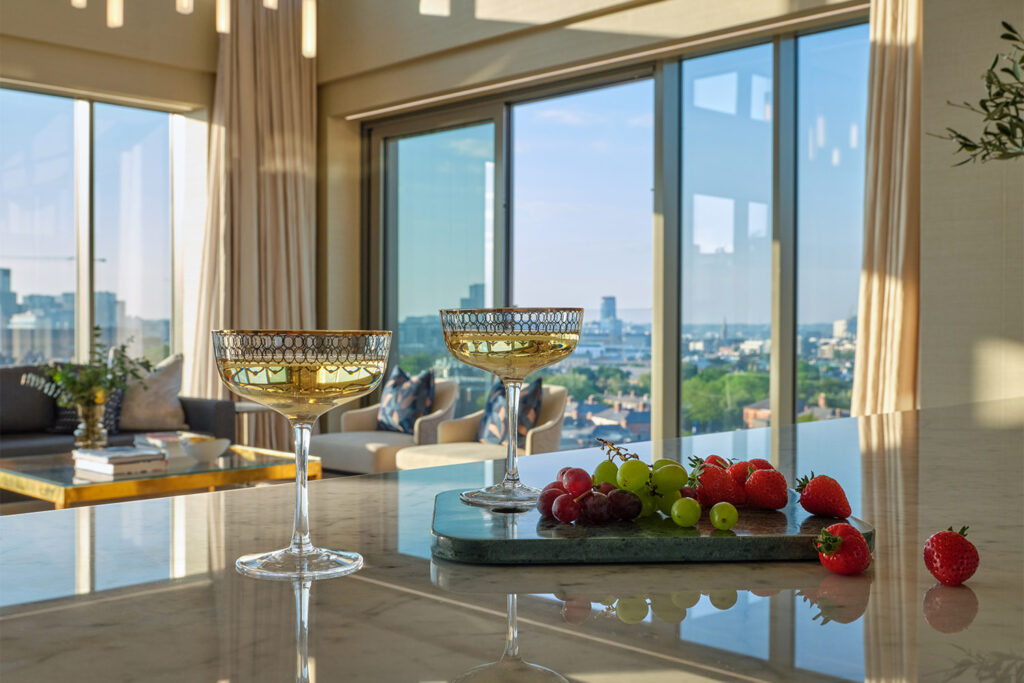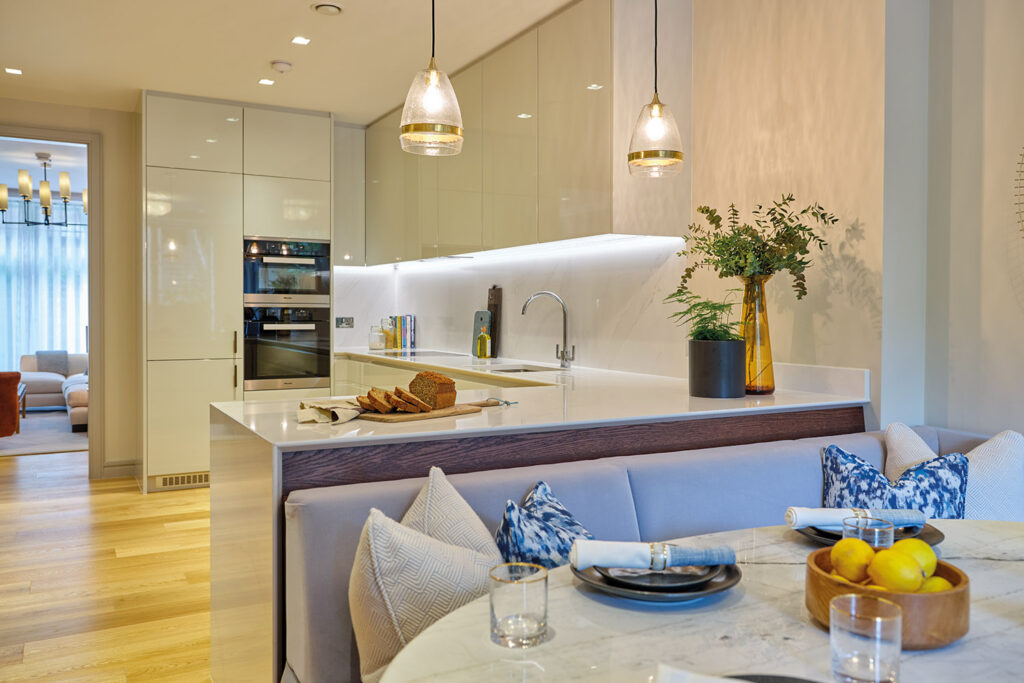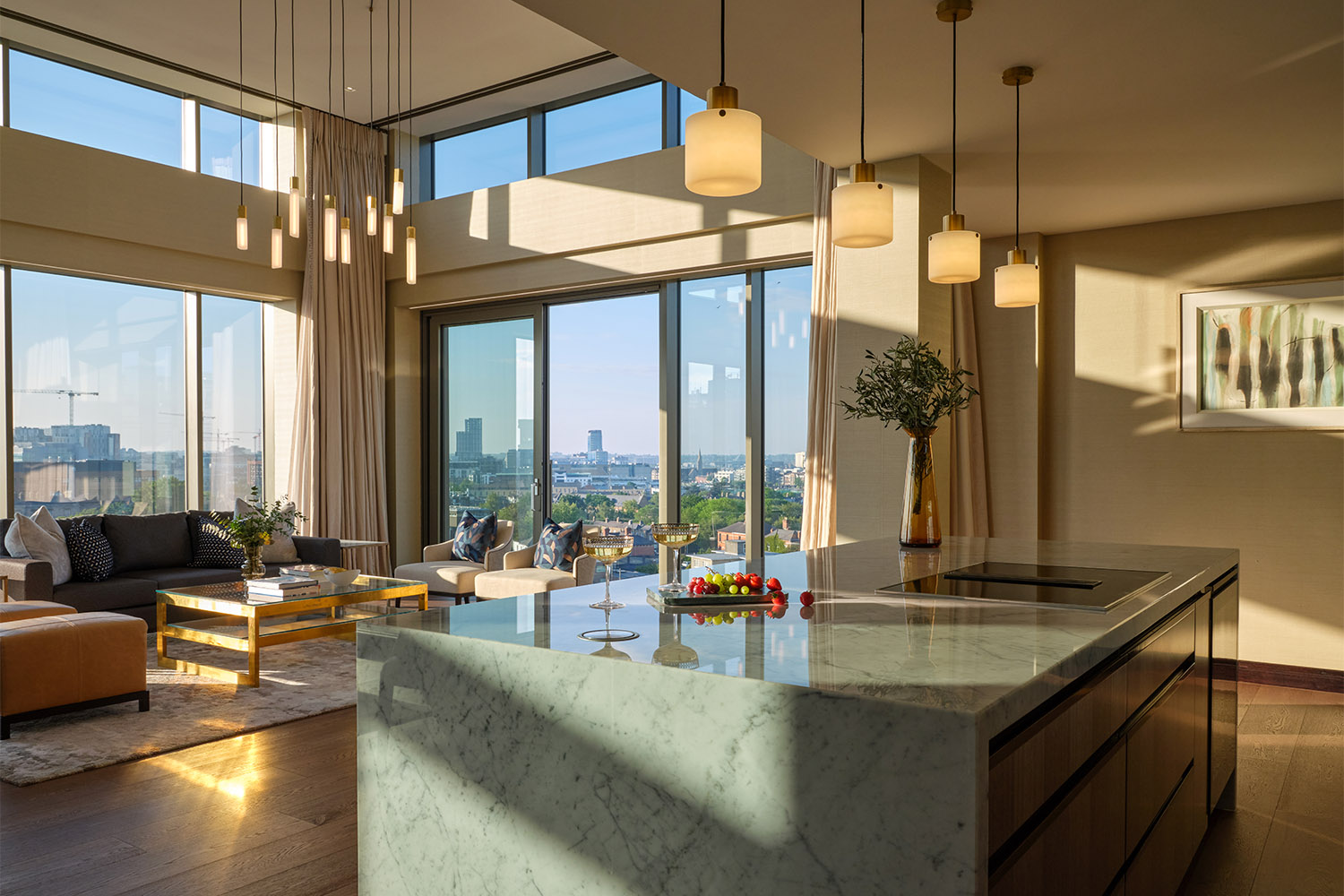“The light constantly changes,
and that alters the atmosphere and beauty of things every minute”
Claude Monet (1840-1926)
Monet was an artist obsessed with light. Famously, the French impressionist spent the last 12 years of his life working on his Nymphéas, a series of 250 oil paintings of the water lilies in his garden in Giverny, just outside Paris, capturing the changing light and shadow throughout each day.
Monet’s use and manipulation of light is worth bearing in mind for anyone contemplating a home development project. Whatever combination of spaces you are working with – bedroom, bathroom, kitchen, living area – light has the power to establish tone, create mood, and allow the overall design to be fully appreciated as it was originally intended.
Light is a key consideration at every stage of the interior design process. It’s a balancing act. Not enough illumination can mean details go unnoticed to the ‘passing’ eye; too much light can be unwelcoming and harsh. If you are crafting the space of your dreams, what do you need to know about light?
‘A room is not a room without natural light’
So said the renowned US architect Louis Kahn, and we concur. Natural light is the best kind of light there is, especially for a busy room like a kitchen or living area.
In these bustling, happy spaces where people come together to eat and entertain, natural light creates the perfect ambience. The fluctuating palette of sunlight and cloud cannot be matched by artificial lighting and is simply better for us as human beings, whose circadian pacemakers are operated by the 24-hour solar day.

So, making the most of windows is essential. That, however, depends on the orientation of your home. South-facing buildings will get the most amount of sunlight all day. Eastern exposure will deliver the best morning light (ideal for a kitchen; perhaps not a bedroom). Western-facing homes will get lovely golden afternoon light, while north-facing views provide regular, calming light throughout the day.
As Monet’s water lilies demonstrate, the type of light, the time of day, even the season, can have a profound effect on our perception of colour. The aspect of each room, therefore, feeds directly into our choices around paint colour – a hugely important consideration and most definitely one to dwell on.
The type of sunshine we can theoretically expect, of course, does not take into account the fickle Irish climate. We cannot rely on the sun to appear with any consistency or regularity in this watery corner of the Atlantic, which means that artificial lighting also has a vital role to play.
‘Space-shaping’ artificial light
Artificial light is the master manipulator, capable of creating a sense of security, warmth, homeliness. By using several sources to carefully illuminate ‘hidden’ corners, artificial light can also help open up a room and create a feeling of space.
Light can be deployed to frame certain areas; to pick out details or design nuances; and to create ‘hotspots’ that optimise certain features of a room. This is done to great effect in retail settings, like jewellery stores where bright, focussed beams accentuate the glittering pieces, or restaurants where mood lights including candles and wall sconces create a romantic, cosy vibe.
There are almost limitless options to consider including down- and up-lights, floor lights, wall lights, hidden lights, feature lights and lamps, integrated architectural lighting, pendants and other beams that can be combined to stunning effect.

With our bespoke approach to craft and detail, no two designs, no two rooms, are ever the same. Each creation shares only the characteristic of exceptionally high quality. Nonetheless, when it comes to the application of light, there are three broad functions:
- Ambient lighting: where an entire room or space is lit evenly, typically using natural light
- Task lighting: where specific areas of a room are highlighted, such as a bathroom vanity, kitchen prep area or reading cubby
- Accent lighting: where lighting is deployed strategically to accentuate an attractive feature (or divert attention from a more mundane aspect of the room)
By layering these three approaches together, we create an overall lighting effect that creates atmosphere; that adds depth and interest to each room; and that illuminates the features you are most proud of. If you have an illuminating vision you’d like to explore further, we’d love to talk to you.

